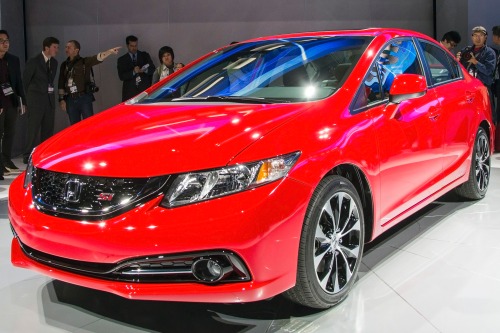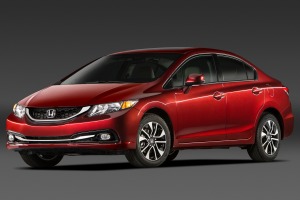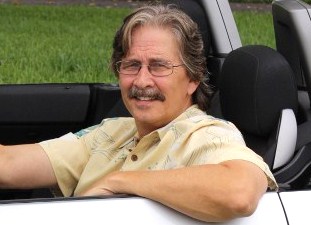Is an older Honda Civic an alternative in today's extremely high-priced car market? Sure, it had a lot going for it back in the day. But today, people who are looking for "older" vehicles that can better fit their budgets need to know how it has actually performed in the real world over its history.
The fact is, older Civics were extremely well made and can still make a solid and economical choice as a used vehicle today, but only with some smart and cautious shopping.

In fact, the Civic is probably one of the best passenger vehicles ever made when it comes to reliability, functionality and cost to operate. And one can be expected to last 200,000 - 300,000 with few issues when well maintained ... with "well-maintained" being the essential element.
That said, they can also have issues. All cars do. And some of the potential issues to be aware of are listed below.
And by "older", I'm generally referring to 10+ year-old Civics, so those produced during its eighth and ninth generations, produced from 2006 - 2015. Going back further may raise the risk a bit too far, although to Honda's credit, there are still many Civics from earlier generations on the road.
So here, ...
- We'll take a look at these two Civic generations and their overall established history of reliability in real world driving to determine how they've actually performed.
- And then we'll list the possible mechanical issues that have been reported by owners so they can be checked before buying one today.
Eighth And Ninth Generation Honda Civic Reliability
Eighth Generation Honda Civic (2006-2011)
The eighth generation Honda Civic is well-regarded for its reliability, with many owners reporting long-lasting performance with minimal issues. Here are some key points:
Engine and Transmission: The 8th-gen Civic is known for its durable engines, particularly the 1.8-liter four-cylinder engine found in most models. The engines are praised for their longevity, often reaching high mileage with proper maintenance.
Owner Satisfaction: Owners reported high satisfaction levels, citing the vehicle's fuel efficiency, reliability, and overall value. The Civic's practical design and low cost of ownership were frequently mentioned as positives.
Consumer Reports: The eighth generation Honda Civic consistently received high reliability scores from Consumer Reports. Models from 2006-2011 typically scored above average in reliability, with particular praise for the engine and transmission.
J.D. Power: This Civic received good reliability ratings from J.D. Power as well, scoring well in terms of dependability and longevity.
J.D. Power's surveys also showed high levels of owner satisfaction, particularly for the 2009-2011 models. Owners appreciate the Civic's reliability, resale value, and fuel efficiency.
2006 - 2011 Civic Possible Mechanical Problems
The eighth generation Civic, recognized for its overall reliability, did encounter some more common mechanical issues as reported by owners, which should therefore be included in a mechanical inspection before buying:
Cracked Engine Blocks: Similar to the ninth-gen Civic, certain models of the eighth generation, particularly the 2006 and 2007 years, experienced issues with cracked engine blocks in the 1.8-liter engines. This problem resulted in coolant leaks and potential overheating. Honda addressed this concern through recalls and warranty extensions.
Transmission Problems: Some automatic transmission models exhibited issues such as premature wear, vibrations, or rough shifting. This issue was more prevalent in earlier model years and could lead to performance-related concerns and potentially costly repairs.
Paint Quality and Clear Coat Issues: Some Civic models suffered from premature paint chipping or clear coat peeling, particularly on horizontal surfaces, which affected the overall aesthetics of the vehicle.
Suspension Components: There were occasional reports of premature wear on suspension components, leading to noises, vibrations, or compromised handling in some vehicles.
Interior Material Durability: In some cases, interior components, such as door panels or trim pieces, showed signs of wear or fading over time, impacting the overall interior aesthetics.
Engine Mounts: Premature wear or failure of engine mounts has been reported by some owners, leading to increased vibration and noise in the cabin.
You May Also Like:
The Easiest Car Negotiation Technique
All About Wholesale And Trade-In Car Prices
Starter Motor and Alternator: Some owners have experienced starter motor or alternator failures, which can result in difficulties starting the vehicle or charging system issues.
Catalytic Converter Problems: Some Civic owners have had issues with the catalytic converter, which can be expensive to replace.
Cracking Windshields: Some owners have reported windshield issues, including cracking or chipping easily, which may necessitate repairs or replacements.
It's important to note that while these issues were reported by some owners, they were not universally experienced across all eighth-gen Civics.
Ninth Generation Honda Civic (2012-2015)
The ninth generation Civic had a mixed start, with the 2012 model year receiving lower reliability scores due to early complaints about interior quality and a less engaging driving experience. But Honda quickly addressed these concerns in subsequent model years. Overall, this generation is considered reliable, with improvements made to address earlier complaints.
Improved Interior Quality: After the initial release in 2012, which faced criticism for its interior quality and design, Honda made significant improvements in the 2013 model year, enhancing materials and overall build quality.
Owner Satisfaction: After the initial release, owner satisfaction improved notably post-2013. Consumers appreciated the improved interior quality, fuel efficiency, and the introduction of more advanced safety features.
Consumer Reports: With this Civic's mixed start, the 2012 model received average reliability scores. However, following the 2013 refresh, reliability scores improved significantly, with later models receiving above-average ratings.
J.D. Power: As with Consumer Reports, the 2012 model year initially received average reliability ratings, but these improved in subsequent years. The 2013-2015 models performed well in J.D. Power's dependability studies.
Overall Maintenance and Longevity
Both the eighth and ninth generation Honda Civics benefit from regular maintenance to ensure longevity. Key maintenance tasks include:
Regular Oil Changes: Essential for keeping the engine in good condition.
Transmission Fluid Changes: Important for both automatic and manual transmissions to ensure smooth operation.
Brake Maintenance: Regular inspection and replacement of brake pads and rotors.
Suspension and Steering: Monitoring and replacing worn components as needed.
Overall, both generations are known for their reliability, with the eighth generation being particularly praised for its long-term durability. The ninth generation faced some initial hurdles but ultimately upheld Honda's reputation for producing dependable vehicles. Regular maintenance and addressing known issues promptly can help ensure a long and trouble-free ownership experience with either generation.
2012 - 2015 Honda Civic Possible Mechanical Problems

The ninth generation Honda Civic, while generally praised for its reliability, did encounter a few mechanical issues reported by some owners and observed by automotive experts. Here are some of the common problems noted that should always be included in a pre-purchase inspection today:
Engine Block Cracks: Similar to the eighth generation, in earlier models, particularly the 2012 model, there were reports of engine block cracks in the 1.8-liter engine. This issue could lead to coolant leaks and potential overheating problems. Honda issued recalls and warranty extensions to address this concern.
Transmission Issues: Some drivers experienced transmission problems, including vibrations, rough shifting, or premature wear in automatic transmissions. While not widespread, these issues were reported in a portion of vehicles, again particularly in the earlier years of this generation.
Paint Quality: Aesthetic concerns emerged regarding the paint quality on certain Civic models, where owners reported premature chipping or peeling of paint, especially in areas prone to road debris.
Engine Problems: Some owners reported the motor shutting off while driving. This was usually caused by faulty sensor issues which fortunately is a fairly inexpensive repair (in the $200 range).
Brake System Wear: Some drivers noted premature wear on brake components, leading to decreased braking performance or unusual noises while braking. This issue, though not universal, was reported in some vehicles.
Air Conditioning Problems: Certain Civics experienced issues with the air conditioning system, such as weak cooling or complete failure, which could be attributed to problems with the compressor or related components.
Exhaust System Rattles: A few owners reported rattling noises from the exhaust system, which could be bothersome.
Suspension Noise: Some drivers experienced noise or rattling from the suspension system, particularly over rough roads or bumps.
 By Josh Rosenberg
By Josh Rosenberg